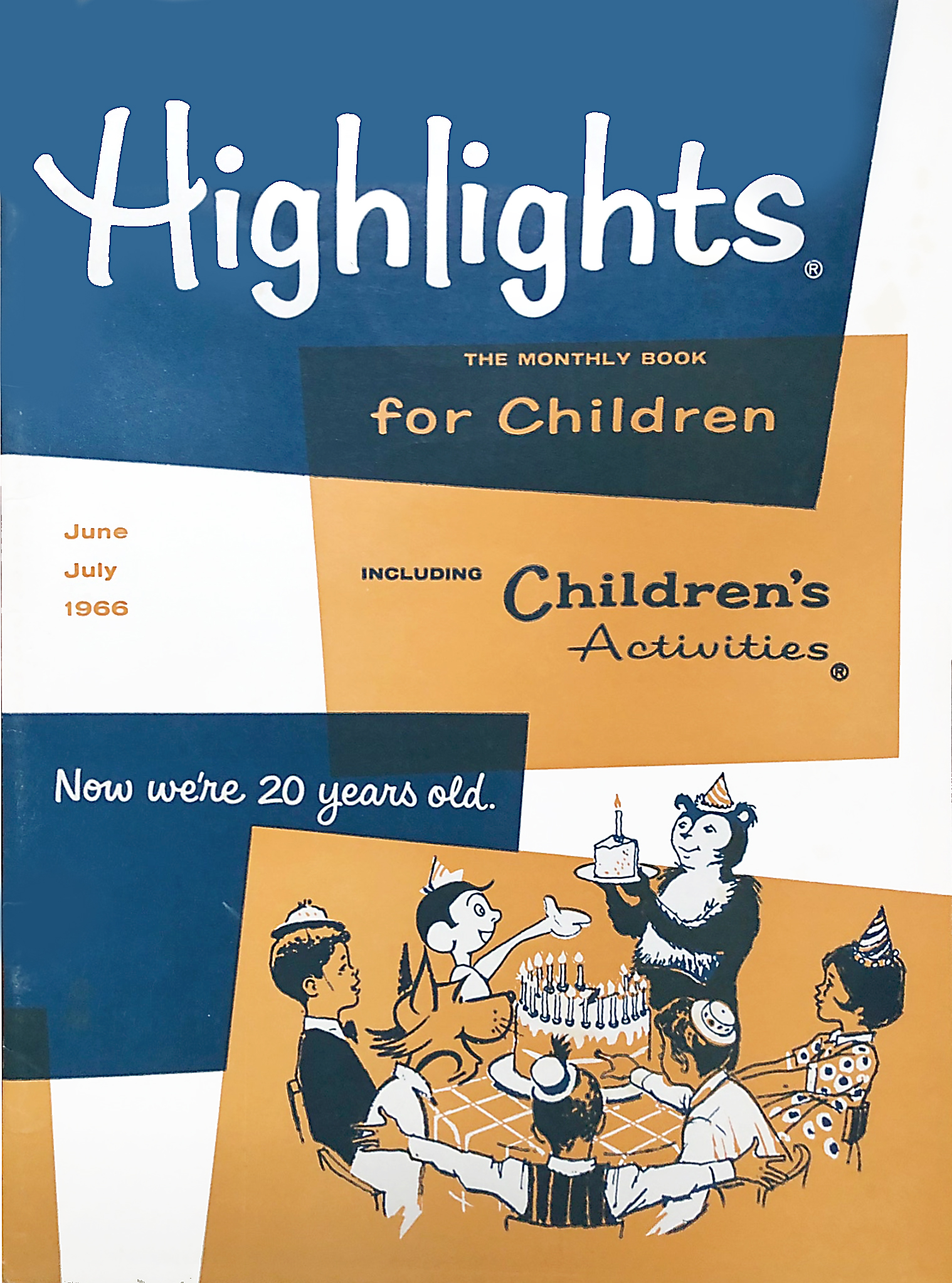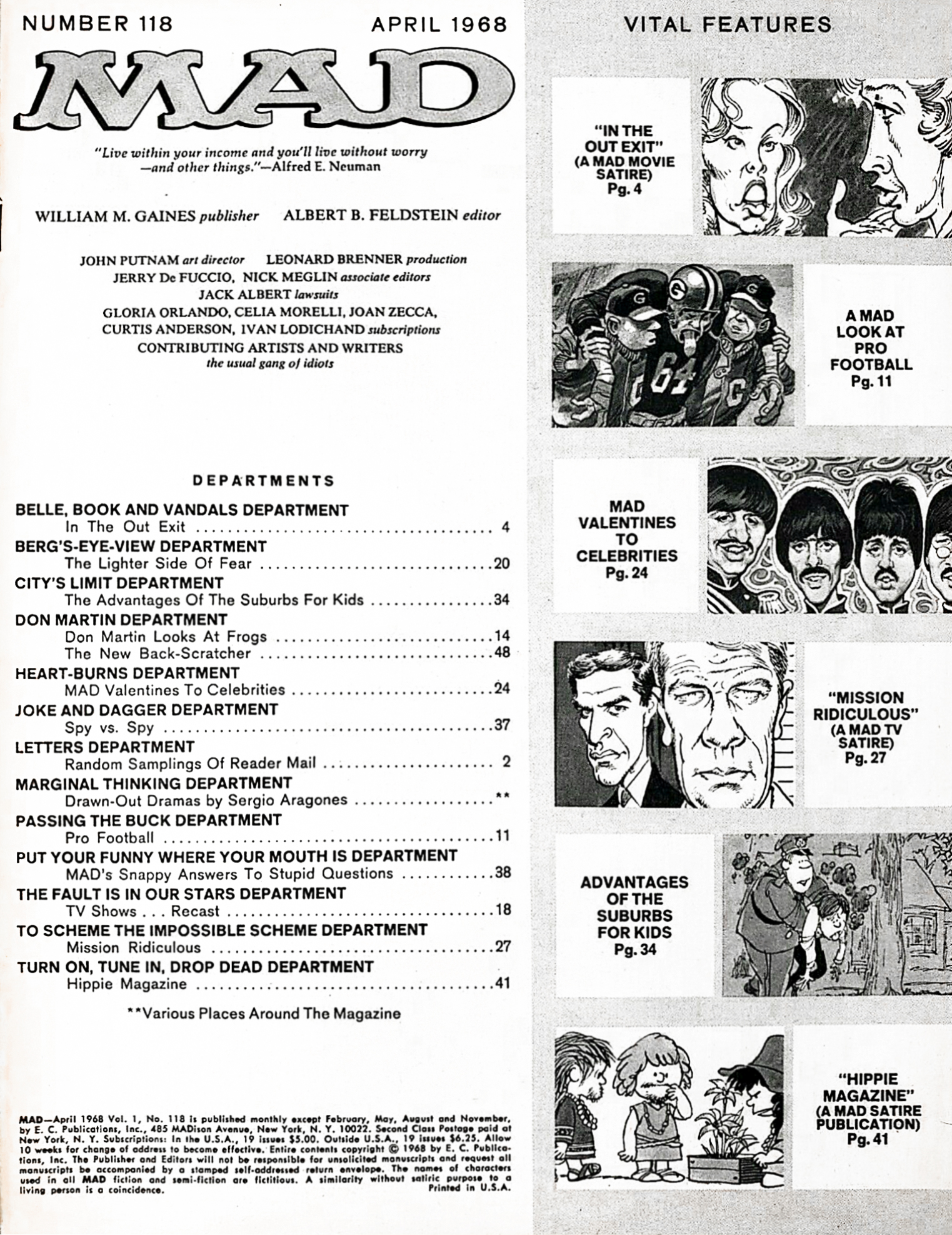In the last 40 years, AURAS has designed and produced about 5,000 magazine issues. That’s probably 250,000 pages of editorial content. It’s because I love magazines and I love designing them. It all started with Highlights Magazine.

I got my first magazine subscription when I was seven. I learned to read in kindergarten from Joel Kahn, a fellow inmate, between our intense workouts with wooden blocks, and I quickly graduated from Dick, Jane, and Spot (Look Jane! See Spot! See Spot run!). From the first issue of Highlights, I was hooked. I always turned to the Hidden Pictures page first, then the comics page with Goofus and Gallant and The Timbertoes. I saved the short stories for last, even though they were the first thing in the magazine. You could search each issue for your favorite parts, making you look forward to the next point. Plus, you could read the magazine in any order you wanted.
Was it a big jump for a smart ass like me to graduate to MAD Magazine? Movie and TV satires with dead-on caricatures from Mort Drucker, The Lighter Side of… by Dave Berg, Cuban ex-patriot Antonio Prohías’ Spy vs. Spy, and, of course,, Al Jaffee’s MAD Fold-in, or as the crew was self-described, “The Usual Gang of Idiots.” I looked forward to the work of particular writers and illustrators and their signature departments.

I was too young to realize these were what we now call a “brand identity.” I also began to understand why magazines are called periodicals—the content was always tied to the latest news and annual seasonal events. Each monthly issue was part of a yearly volume. Readers looked for standard content for each issue and unique features throughout the year.
At 12, I just thought magazines were cool, but I had already learned all I needed to know about magazines by then. When I was a few years older, I could appreciate the contributions of art directors like Alexey Brodovitch, Henry Wolf, Milton Glaser, and George Lois. Still, I never forgot the first things I learned about magazines, and when I started designing my own, I tried to apply those same ideas.

Designing a publication is not the same as art directing and designing an issue of a magazine. Creating cover concepts, creating feature layouts, and parsing manuscripts to enhance their impact, are part of the collaborative editorial process for every issue. Designing that template is like building an art gallery; designing each magazine issue is like figuring out the most engaging way to fill the rooms.
Some people are born to design publications, others to art direct magazines. Many publishers think the skills are the same, but they require very different mindsets. They assume the magazine’s art director is also good at magazine redesign, but the results are often disappointing. Choosing grids, typefaces, and navigation design may be undercooked in favor of what designers like to do best—feature layouts. Department structural variation and distinctive editorial approaches require collaboration among designers, writers, and editors. Building an issue map and filling it with unique content is the DNA of a publication and considering both the editorial and visual elements is equally important.
Designing a publication can take months, with deliberate reader research, staff input, and alternate approaches. Designing an issue of a magazine has to happen in a few weeks and allow for multiple concepts and illustration choices with plenty of back-and-forth among editors, writers, and publishers. The workflow can be exhilarating. I like doing (and am pretty good at) both things.
There’s a practical reason to love magazines too. Specializing in magazine design and production has been a great business model for AURAS Design. Magazine production contracts are stable, long-term income. AURAS has designed one publication for forty years—more than 240 issues. Other contracts have lasted longer than a decade. Multi-year contracts ensure steady cash flow, so planning for growth and establishing credit is less risky. Over the years, AURAS migrated vendor services such as typesetting, film output, color separations, photography, and photomanipulation in-house, generating additional revenue. Steady growth enabled us to buy buildings and not throw away money on rent, with tenants providing another revenue stream.
Publishers and business associations also need other design services for marketing, conferences, business identity, and AURAS offers those skills to an already satisfied clientele. While it is true that the magazine business has convulsed the last decade, and the pandemic has ruptured annual projects for conferences and events, the choices we made decades ago continue to keep producing dividends. Every time I get another magazine redesign project, it pleases me that it all started with Hidden Pictures.